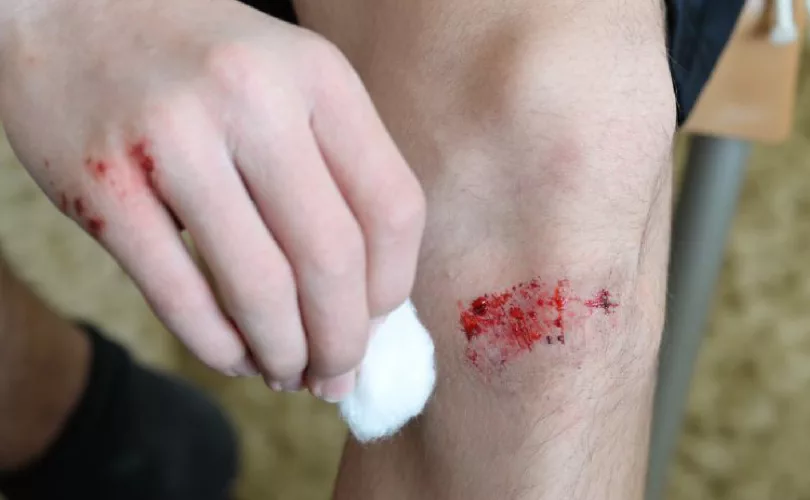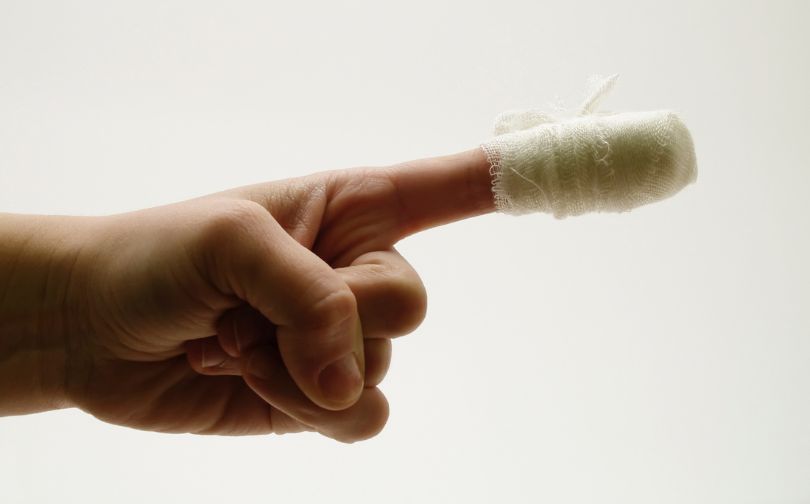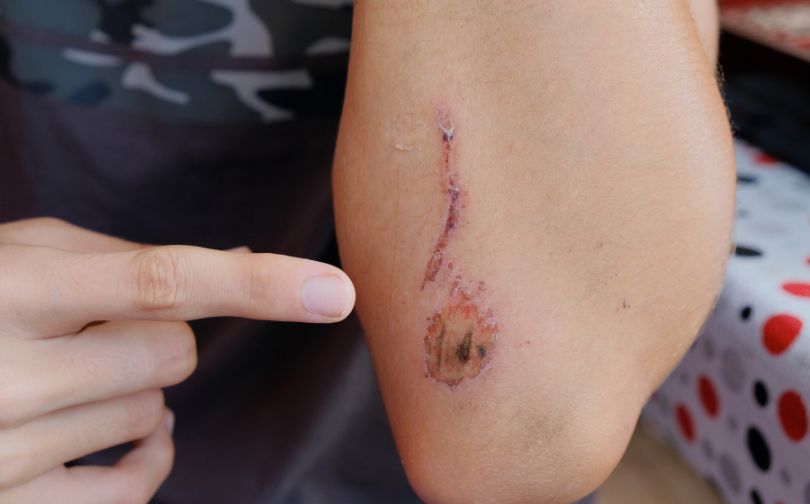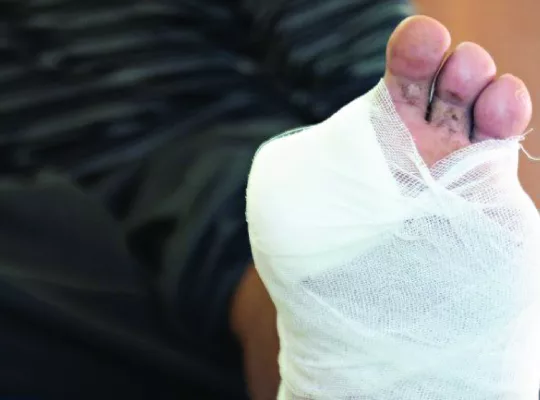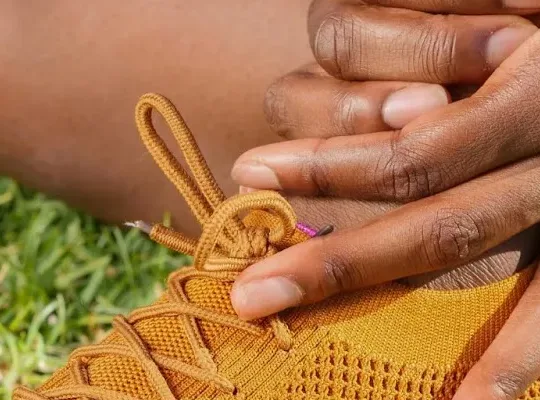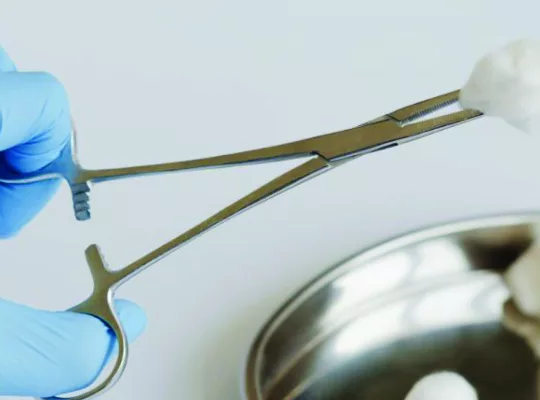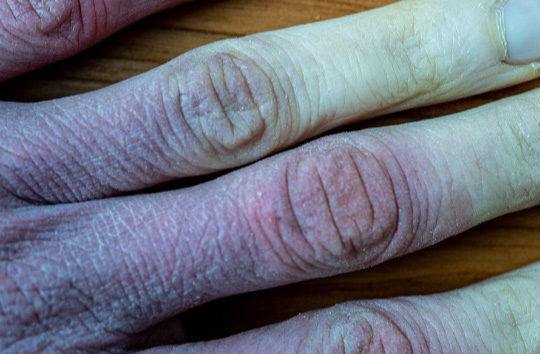Accidents can happen in the blink of an eye, and when they do, understanding the type of wound is essential for proper treatment. Two common injuries people often confuse are lacerations and abrasions.
Lacerations occur when the skin is torn, often due to sharp objects, leaving deep cuts that may require stitches. Abrasions, on the other hand, involve scraping away the top layer of skin, resulting in a more superficial injury, though they can be just as painful.
Knowing how to distinguish between the two not only helps in administering the right care but also prevents complications. For instance, an untreated laceration can lead to infection, while abrasions can leave scars if mishandled.
In this guide, we’ll explore the key differences between these injuries, provide tips on treating them effectively, and help you understand when to seek professional medical help.
Lacerations
Lacerations are essentially cuts or tears in the skin. Let’s say you’ve accidentally cut your finger while slicing vegetables—that’s a laceration. These cuts can happen when the skin comes into contact with a sharp object like a knife, broken glass, or even a piece of paper with a sharp edge.
Lacerations vary in depth and severity. They can be shallow, only affecting the top layers of skin, or deep, penetrating underlying tissues and muscles. One of the defining characteristics of lacerations is that they often have irregular, jagged edges because, typically, they’re caused by blunt force or a sharp object moving across the skin at an angle. (A surgical incision, by contrast, is precise and smooth, as these are intentional cuts.)
Due to the irregular nature of the wound, lacerations might bleed more profusely than some other types of injuries. Depending on their depth, they might require stitches to heal and minimize scarring properly.
Abrasions
Now imagine you’re out for a bike ride and accidentally tumble onto the pavement. The resulting scrape on your knee is an abrasion. Abrasions, often called “road rash” or “grazes,” occur when the skin is rubbed against a rough surface, causing the top layers of skin to be scraped away. Think of it as a friction burn.
Unlike lacerations with jagged edges, abrasions tend to have more superficial borders, meaning they’re more surface-level and not as deep. Although they might not bleed as much as lacerations, they can still be painful due to the exposed nerve endings in the damaged skin.
In some cases, debris from the abrasive surface might become embedded in the wound, potentially leading to infection if not properly cleaned.
The Differences Between Lacerations and Abrasions
Here’s a closer look at lacerations vs. abrasions and how they compare and contrast.
Cause and Mechanism
- Lacerations result from a cutting or tearing force, such as a sharp object or blunt trauma.
- Abrasions occur due to friction between the skin and a rough surface.
Appearance
- Lacerations often have irregular, jagged edges and can be deeper wounds.
- Abrasions tend to have smoother, more superficial borders and might cover a larger surface area.
Bleeding
- Lacerations can bleed more profusely, especially if they’re deep.
- Abrasions usually result in less bleeding.
Healing Process
- Lacerations might require stitches to close the wound and facilitate healing properly. Deeper cuts can have a higher risk of scarring.
- Abrasions generally don’t require stitches, as they’re more superficial. However, they might still leave behind some scarring.
Pain and Sensitivity
- Lacerations can be painful due to damage to nerves and underlying tissues.
- Abrasions can be painful because they often expose nerve endings in the top layers of skin.
Treatment and Prevention
Consider following the steps below to treat and prevent lacerations and abrasions.
Lacerations
- Apply pressure to control bleeding.
- Clean the wound with mild soap and water to prevent infection.
- Keep the wound clean and covered as it heals to reduce the risk of infection.
- Watch for signs of infection, such as increased redness, swelling, warmth, or pus. If the laceration is deep, gaping, or in an area with high movement, seek medical attention for stitches.
- Keep a first aid kit nearby that can help stop the bleeding. You can also use Celox for hemostatic control on severe bleeding.
Abrasions
- Clean the wound gently with mild soap and water to remove dirt and debris.
- Apply an antibiotic ointment and cover the injury with a clean, non-stick bandage to prevent infection.
- Change the application regularly and watch for signs of infection.
- Avoid picking at any scabs that form, as this can increase the risk of scarring.
- If the abrasion is extensive, deep, or becomes infected, seek medical attention.
- Carry a portable first aid kit with you in case of emergencies.
While accidents can happen, there are steps you can take to reduce your risk of lacerations and abrasions and prevent them from occurring:
- Use appropriate safety equipment when engaging in activities with a risk of injury, like using gloves while handling sharp objects and wearing knee pads, elbow pads, and helmets while biking or engaging in other active contact sports and activities.
- Be mindful of your surroundings to avoid potential hazards.
- When using sharp tools, maintain proper focus and control to prevent accidents.
- Wear protective clothing, such as long pants and sleeves, when engaging in activities that could cause abrasions, like skateboarding or rollerblading.
When to Seek Medical Attention?
When dealing with injuries, it’s important to recognize when medical attention is needed to avoid complications.
- Severe Bleeding: If you cannot control the bleeding after 10 minutes of applying firm pressure, seek immediate medical help. Additionally, if blood spurts from the wound, it may indicate an arterial injury that requires urgent care.
- Deep or Large Wounds: Wounds deeper than 1/2 inch or with separated edges may need stitches. A healthcare professional should assess these wounds to ensure proper treatment and healing.
- Puncture Wounds: Puncture wounds, especially those caused by rusty objects or animal bites, carry a high risk of infection. A tetanus shot may be necessary, so medical evaluation is advised.
- Animal or Human Bites: Any bite that breaks the skin should be checked by a doctor due to the risk of infection. Even seemingly minor bites can become serious if not treated promptly.
- Signs of Infection:If the wound shows redness, swelling, warmth, or pus, or if you develop a fever, these are signs of infection. Seeking medical care at this stage can prevent the infection from worsening.
- Wounds on Sensitive Areas: Injuries near the eyes or over joints should always be examined by a doctor. These locations are prone to complications and may need specialized treatment.
- Underlying Health Conditions: People with diabetes or weakened immune systems are at greater risk for complications from any wound. It’s important for them to seek medical advice even for minor injuries to prevent severe outcomes.
Conclusion
Understanding the differences between lacerations and abrasions can help us take the proper steps to care for these common injuries. Lacerations are cuts or tears caused by sharp objects or blunt force, while abrasions result from skin rubbing against rough surfaces.
While both types of injuries might seem minor, proper treatment and care are essential to prevent complications like infections and scarring. By staying cautious and taking necessary precautions, we can reduce the chances of encountering these injuries in the first place.
FAQs
Why Is It Important to Keep an Abrasion Moist During Healing?
Moistening an abrasion with petroleum jelly or antibiotic ointment helps prevent scab formation, reducing the chance of scarring. This moisture barrier also protects against infection and promotes faster healing by keeping the skin hydrated.
How Do You Differentiate Between a Minor and Severe Laceration?
Minor lacerations are shallow and manageable with basic first aid. Severe lacerations are deeper, may affect tissues or structures beneath the skin, and typically cause significant bleeding, requiring immediate professional medical attention.
How Should Lacerations Be Treated at Home Before Seeking Medical Attention?
For minor lacerations, rinse the wound with lukewarm water, apply pressure to control bleeding, and cover with a clean bandage. If bleeding continues or the cut is deep, seek medical care. Avoid removing hair near the wound to reduce the risk of infection.
What Are Common Causes of Abrasions?
Abrasions typically occur from falls or contact with rough surfaces like concrete or gravel. These injuries, often called “raspberries” or “strawberries” due to their appearance, result from the top layer of skin being scraped away.

